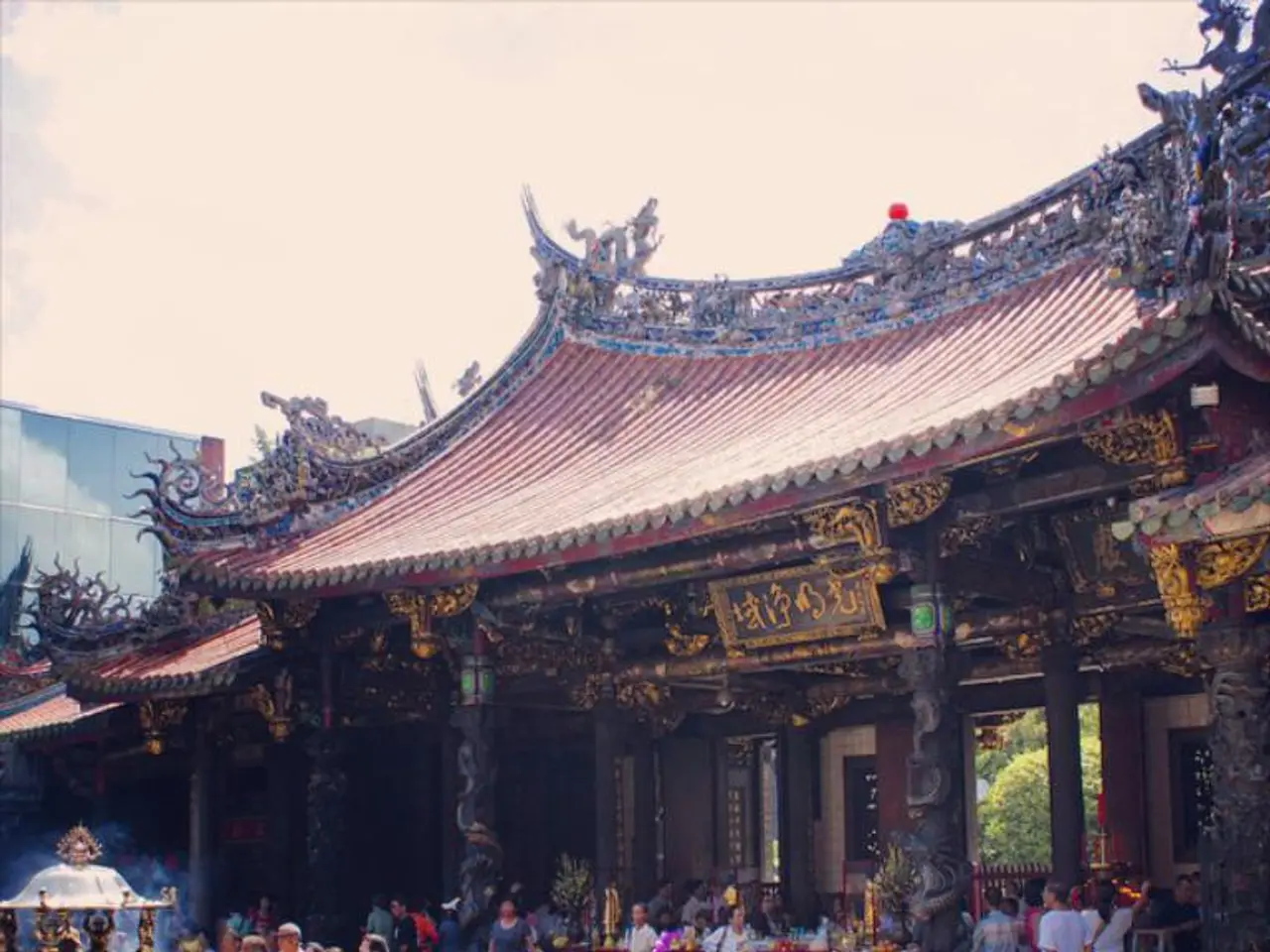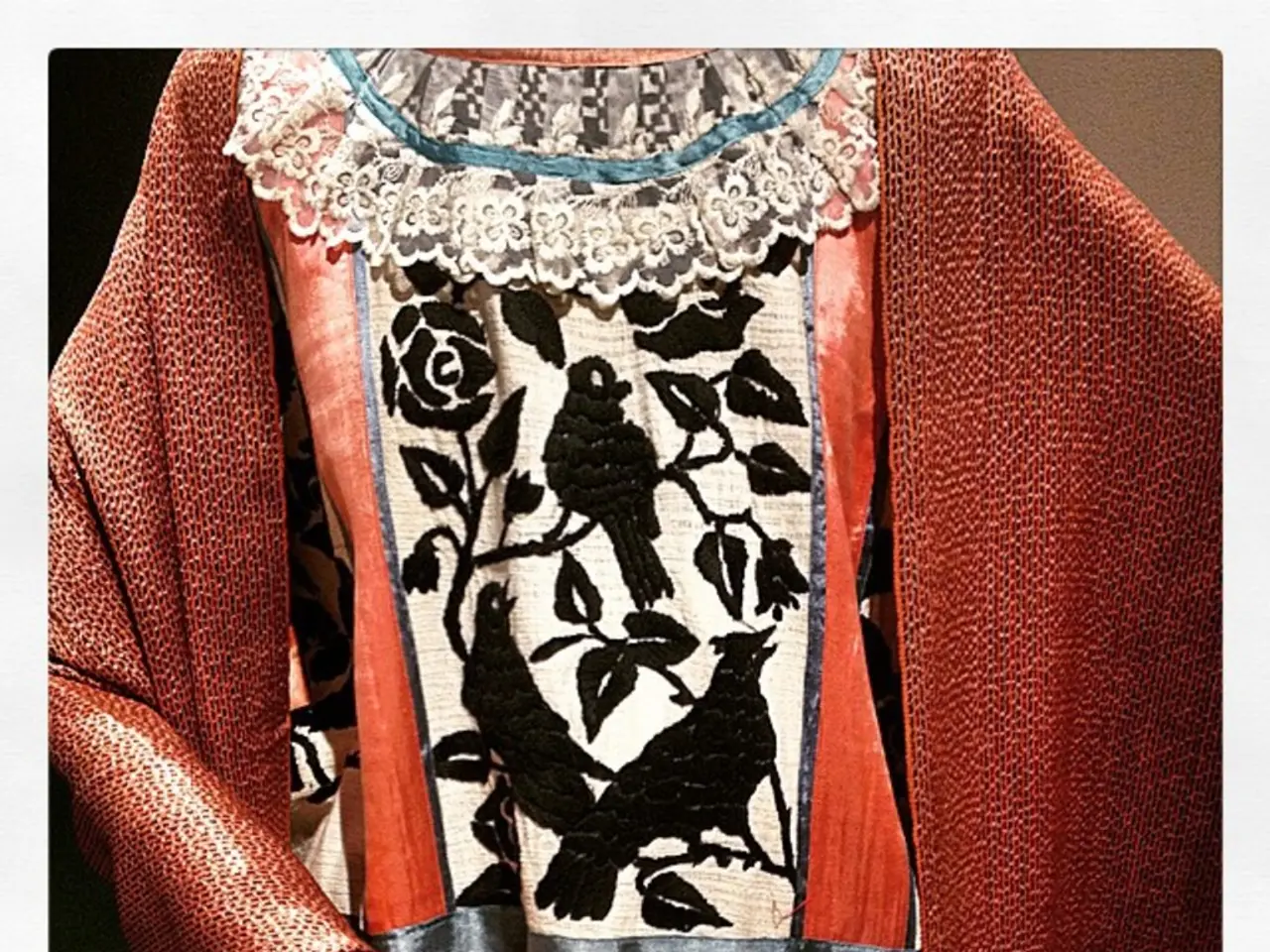Top Three Renowned Japanese Art Forms: Exploration and Appreciation of the Nation's Artistic Masterpieces
================================================================================
In the heart of the Edo period, Katsushika Hokusai created a masterpiece that would captivate audiences for centuries to come. His series, 'Thirty-Six Views of Mount Fuji', is a breathtaking exploration of Japan's natural landscapes, showcasing the artist's remarkable talent and innovative printing techniques.
One of the most iconic pieces in this series is 'The Great Wave off Kanagawa'. This woodblock print vividly captures the immense power of nature through a towering wave about to engulf small boats, juxtaposed with the calm, enduring silhouette of Mount Fuji in the background. The contrast symbolizes mankind's vulnerability amid nature's forces alongside a sense of serene strength.
'The Great Wave off Kanagawa' is a masterpiece of ukiyo-e, a Japanese woodblock printing tradition that reached great artistic heights in the 18th and 19th centuries. Hokusai's work exemplifies ukiyo-e's focus on natural landscapes and daily life, and it played a key role in bringing Japanese art to Western audiences in the late 19th century. The dramatic imagery of the wave influenced many Western artists—such as Impressionists and Post-Impressionists including Monet and Van Gogh—and contributed significantly to Japonisme, a Western fascination with Japanese aesthetics.
The 'Thirty-Six Views of Mount Fuji' series remains a timeless masterpiece in the world of Japanese art, offering audiences an immersive experience into the beauty of Japan's natural landscapes. Hokusai's innovative use of the 'oban yoko-e' printing technique, employing a horizontal format to represent landscapes, sets the series apart from traditional Japanese art.
Exploring Japanese art offers insight into Japan's cultural history and the profound influence it has had on the world. Beyond 'Thirty-Six Views of Mount Fuji', other notable works include Hiroshige's 'One Hundred Famous Views of Edo', a series of ukiyo-e woodblock prints depicting the beauty and essence of Edo, the former name for Tokyo.
Japanese art forms, including Ikebana, Sumi-e, and Ukiyo-e, are celebrated for their unique aesthetics and techniques, embodying Japan's rich cultural heritage. These can be seen in institutions and museums throughout Japan, such as the Tokyo National Museum, Kyoto National Museum, and The National Museum of Western Art.
In conclusion, Hokusai's 'Thirty-Six Views of Mount Fuji' is a remarkable exploration of nature's beauty and grandeur, highlighting the harmony between humans and their surroundings. Its profound cultural impact, as symbolised by 'The Great Wave off Kanagawa', continues to resonate worldwide today.
- In the realm of modern lifestyle, the influence of Hokusai's 'Thirty-Six Views of Mount Fuji' can be seen in various aspects, such as the growing appreciation for Japanese aesthetics in fashion-and-beauty trends.
- For those seeking enlightenment beyond daily life, the wisdom and beauty found in books, such as explorations of Hokusai's work, offer an entertaining dive into the world of art and culture, providing food-for-thought and sparking imagination much like Hokusai's masterpieces.







